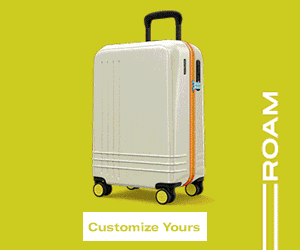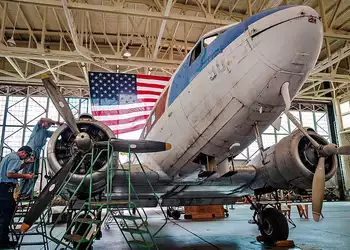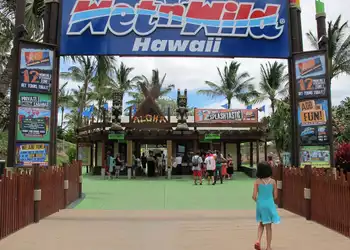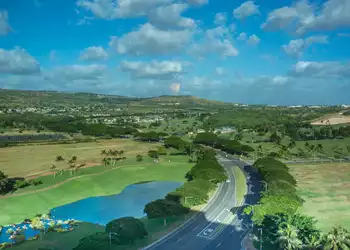In February of 1948, funding was approved by Congress to begin building the National Cemetery of the Pacific, or known by its informal name “Punchbowl Cemetery,” due to its location at Punchbowl crater in Honolulu, Hawaii.
This national cemetery honors men and women who served in the armed forces, most notably World War I and II, the Korean War, and the Vietnam War. Over 53,000 veterans reside in the cemetery, and millions of people visit the cemetery grounds to pay their tributes every year. The cemetery is listed through the National Cemetery Administration, the Department of Veteran Affairs, and it is listed on the National Register of Historic Places.
Located in beautIful Honolulu, Hawaii, this historic site for the United States military and their families is one of the most popular sites in Honolulu, the capital city on the island of Oahu.
The History of the Cemetery
The National Memorial Cemetery of the Pacific made its first interment in January of 1949, before officially being opened in July of 1949. This was the first cemetery that placed gold leaf and medal insignias on tombstones to signal which recipients won Bicentennial Medal of Honors. There are other translations for the Hawaiian name of Punchbowl, including “Puowaina,” which translates to “Hill of Sacrifice.” Over 75,000 to 100,000 years ago this “Punchbowl” area was formed as a crater that occurred from the ejection of hot lava through cracks in old coral reefs. This was during a period of secondary volcanic activity in Honolulu, and the activity extended all of the way to the foot of the Koolau Mountain Range. Many years ago the site was an altar for Hawaiians to offer human sacrifices to pagan gods, and they also killed any violators of the grounds for various taboos. Kamehameha the Great placed two cannons at the rim of the crater that saluted distinguished arrivals and marked important events. The Hawaii National Guard used the crater as a rifle range in the 1930s. During World War II, the crater was used to guard Honolulu Harbor and Pearl Harbor’s South Edge. It was once recommended in the 1890’s that the area be turned into a cemetery that would be used for Honolulu, since the city’s population was rapidly increasing. The people of Honolulu were not thrilled with the idea, and creating the cemetery was rejected. But nearly 50 years later, in 1943, this Punchbowl area was given by the governor of Hawaii. The project was postponed due to a lack funds through the project’s appropriation. When the remains of thousands of servicemen from World War II were waiting to be buried on the island of Guam, pressure began to be created to open an area that would be home to these soldiers. Finally, funding was approved and construction began in 1948.Recognizable Names
The cemetery opened officially in 1949. The cemetery is home to both notable persons and markers that many organizations and foreign governments have donated to honor America’s veterans. Most of these memorials honor service members from 20th-century wars, including those killed at Pearl Harbor. The cemetery is home to many notable veterans and recipients of various awards and accolades, like the Medal of Honor. Many of these veterans are listed on the cemeterary’s official website, as well as a search that allows to find a veteran. The National Memorial Cemetery of the Pacific is also home to Ellison Onizuka, the first astronaut from Hawaii, and Stanley Dunham, a World War II veteran and the grandfather of former President Barack Obama. Over 29,000 heroes have their named carved, and many veterans from World War II, Vietnam, and the Korean Wars who were pronounced Missing in Action, lost, or buried at sea are honored at the “Courts of the Missing.”Where is the Cemetery Located?
The National Memorial Cemetery is in Central Honolulu. It is roughly at the midpoint between the area of hotels on Waikiki Beach and the Honolulu Airport. This centers the airport near two hot spots, the place many people depart from Hawaii, and one of the most notable beach areas in Honolulu.
The cemetery can be visited on your way to or from the airport, or as a stop if you are staying at nearby Waikiki Beach.





